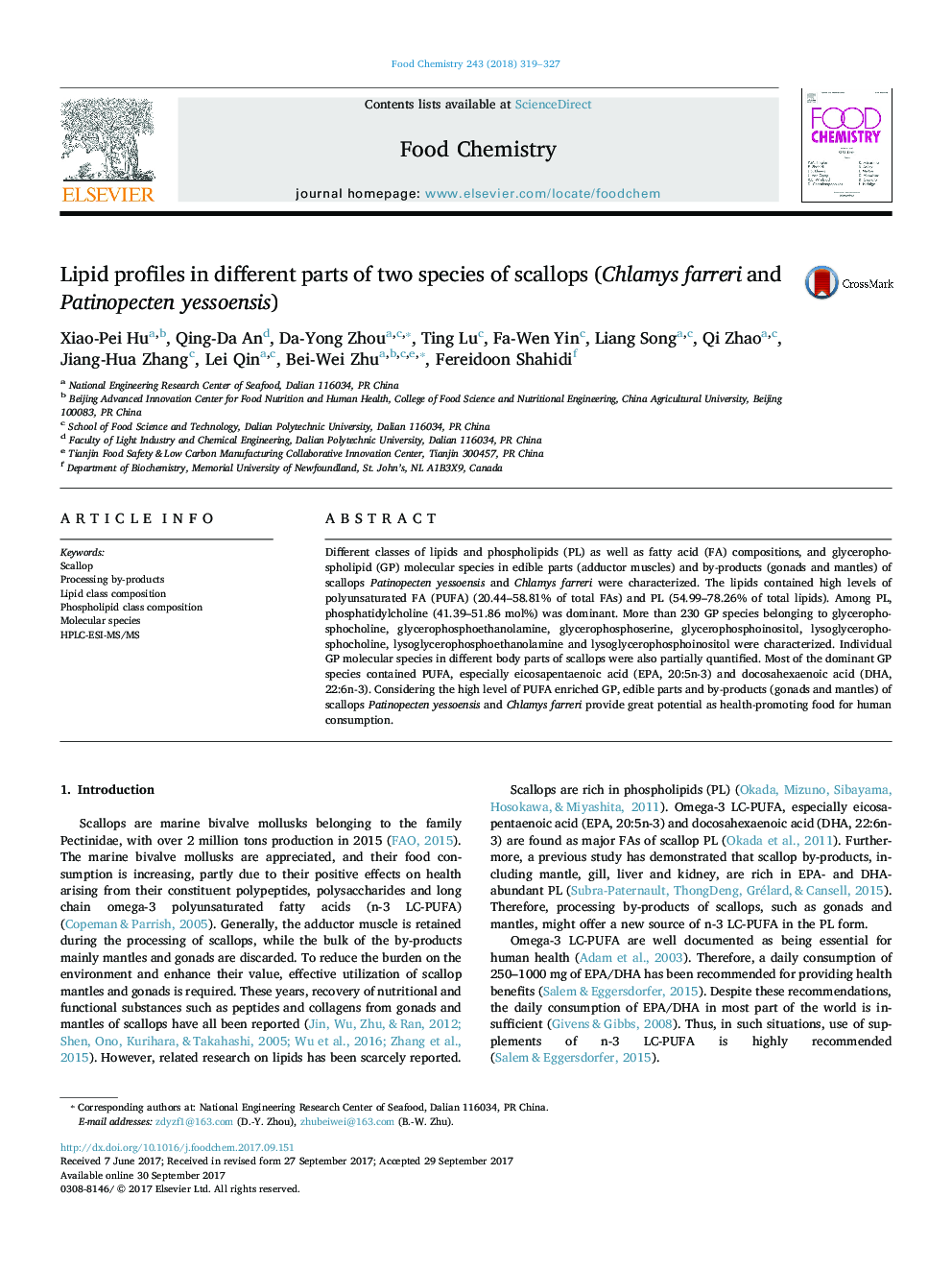| Article ID | Journal | Published Year | Pages | File Type |
|---|---|---|---|---|
| 5132560 | Food Chemistry | 2018 | 9 Pages |
â¢Total lipids were recovered from different parts of two species of scallops.â¢Lipid class compositions were determined using TLC-FID.â¢Phospholipid class compositions were determined using 31P NMR.â¢Glycerophospholipids were characterized according to MS and MS/MS data.â¢By-products of scallop are potential sources of n-3 LC-PUFA enriched phospholipids.
Different classes of lipids and phospholipids (PL) as well as fatty acid (FA) compositions, and glycerophospholipid (GP) molecular species in edible parts (adductor muscles) and by-products (gonads and mantles) of scallops Patinopecten yessoensis and Chlamys farreri were characterized. The lipids contained high levels of polyunsaturated FA (PUFA) (20.44-58.81% of total FAs) and PL (54.99-78.26% of total lipids). Among PL, phosphatidylcholine (41.39-51.86 mol%) was dominant. More than 230 GP species belonging to glycerophosphocholine, glycerophosphoethanolamine, glycerophosphoserine, glycerophosphoinositol, lysoglycerophosphocholine, lysoglycerophosphoethanolamine and lysoglycerophosphoinositol were characterized. Individual GP molecular species in different body parts of scallops were also partially quantified. Most of the dominant GP species contained PUFA, especially eicosapentaenoic acid (EPA, 20:5n-3) and docosahexaenoic acid (DHA, 22:6n-3). Considering the high level of PUFA enriched GP, edible parts and by-products (gonads and mantles) of scallops Patinopecten yessoensis and Chlamys farreri provide great potential as health-promoting food for human consumption.
